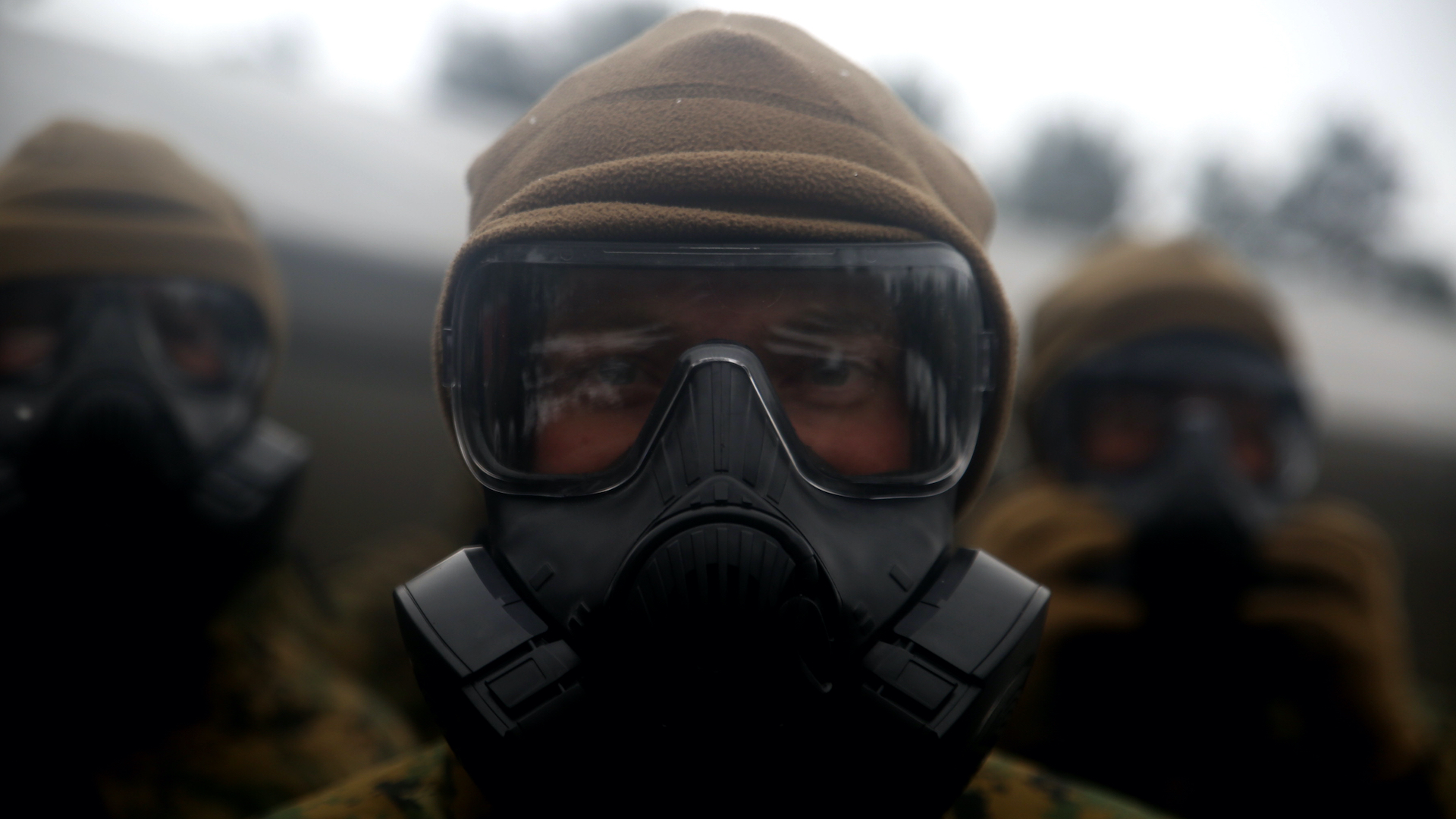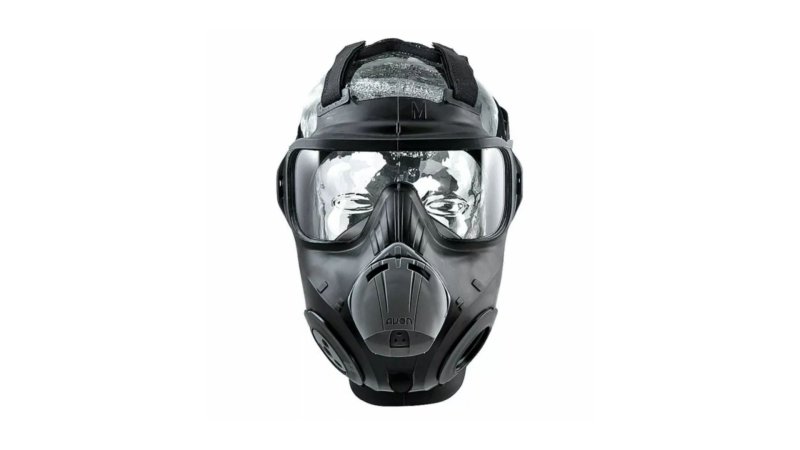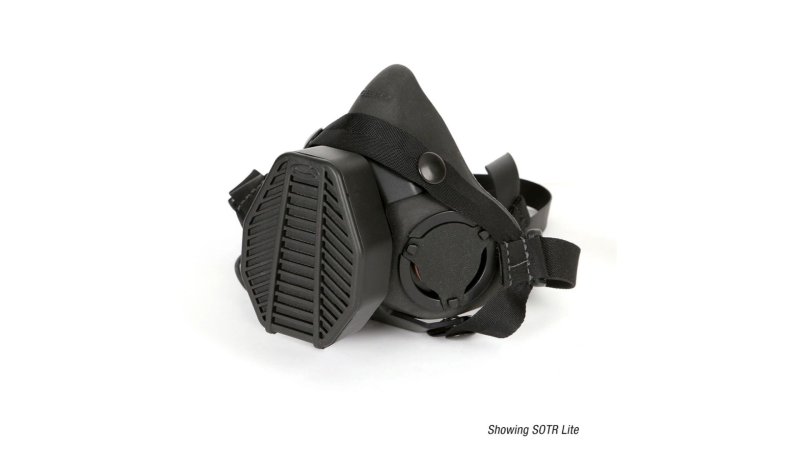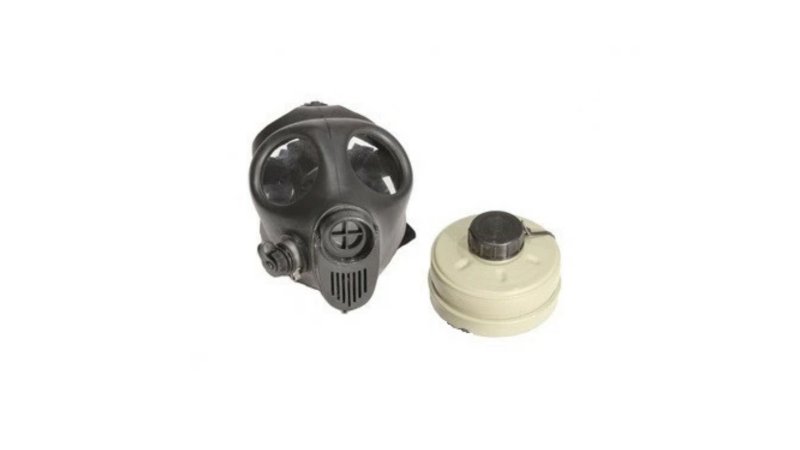

We may earn revenue from the products available on this page and participate in affiliate programs.
In recent years, U.S. service members have realized that gas masks aren’t just for suffering through yearly gas mask qualifications, but are useful tools for any sort of situation where airborne chemicals or particulates are present. The western United States experiences wildfires and high levels of airborne smoke, which can aggravate respiratory illnesses, and during the BLM protests in 2020, many people realized that the clouds of CS gas used by the police affected everyone, even if they weren’t physically at the protest.
These hazards are nothing new, and people have taken to purchasing subpar (but heavily advertised) gas masks as a way to remediate this. The advantage here is that there are ways that you can actually own the same gas masks trusted by military CBRNE specialists, and we’re here to show you these ways, and offer some important tips on how to make sure that the next time there’s some sort of airborne contaminant, you’re set. Remember, when buying used, and at least once a year, check the seals of your gas mask to prevent contaminant infiltration.
How we tested
For this article, I drew upon my own experience wearing and selling gas masks, which helped make the practical application parts of this article easier, but acknowledged my own lack of expertise on the matter, and instead turned to CBRNE experts in the military and DoD civilian communities who have, in some cases, relied upon their respirators to save their lives while they work with hazardous chemicals and substances. This, combined with research and statistics to back up what they said, led to the recommendations today. If any of you were hoping that we’d taken one of our employees and shoved him into a room with Sarin gas to see if the gas mask worked, I’m sorry to disappoint.
est Gas Mask Overall
Avon M50
Pros
- The military standard, so accessories are common
- Capable of mounting voice boxes and radio links
- Filters are easy to find
Cons
- Costly for people who just want gas masks to feel like preppers
- Bulky on the face
- Lenses fog easily
Product Specs
- Country of manufacture: U.S.
- Filter compatibility: NATO 40mm
- Size options: S-XL
Best Value
Ops-Core SOTR
Pros
- Extremely compact
- Easy to take on and off
- Inexpensive relative to full-face masks
Cons
- Leaves skin exposed to corrosive agents
- Filters are proprietary
- Filters are only suitable for particulate
Product Specs
- Country of manufacture: U.S.
- Filter compatibility: Ops-Core proprietary
- Size options: One size fits all
Best Gas Mask for Kids
4A1 Youth Gas Mask
Pros
- Small enough for most kids
- Made to a good standard
- Still compatible with NATO filters
Cons
- Limited use
- Some might not trust foreign sourcing
- No way to buy new masks
Product Specs
- Country of manufacture: Israel
- Filter compatibility: NATO standard
- Size options: One size
Our verdict on gas masks
The fact that people have to consider the best gas masks to buy for emergencies is an uncomfortable one, but being prepared is the best way to see another day.
The Avon M50 is the best overall choice for a reason, given that it’s the military standard in so many countries and has a healthy aftermarket.
The Ops-Core SOTR is a great choice if you need quick, handy, and compact respiratory protection against airborne particles.
The 4A1 youth gas mask is a great choice for kids eight and up who need emergency respiratory protection, like in the event that you have to get your family away from the forest fires that plague hot and dry areas of the U.S.
Overall, the best gas masks to buy share something in common: They’re designed for professionals, but are available to anyone.
What to consider when buying gas masks
The biggest concerns when buying a gas mask are filter availability, age, and size, as well as whether the type of filter is suitable for what you need.
Types of gas mask filters
There are three ways to tell what kind of filter you’re getting and whether it’s good for the intended use.
Filters will often feature a string of numbers and letters such as “A3B2E3K2P3,” which can be hard to understand if you’re new to this. However, each letter indicates what it protects against, and the number next to it indicates to what level it protects, measured in PPM, or Parts Per Million.
Class 1, 2, or 3 filters
The class of a filter determines how many parts per million a filter is good to stop, in terms of concentration of toxins. Class 1 is 1,000 PPM, Class 2 is 5,000 PPM, and Class 3 is 10,000 PPM.
ABEK code
The ABEK code is a code that dictates which threats a filter protects against, and how much. The “A” stands for gasses and organic vapors with a boiling point greater than 65 degrees celsius; “B” stands for inorganic gasses and vapors, e.g., chlorine; “E” stands for sulfur dioxide and hydrogen chloride; and “K” stands for ammonia. There are other designations like AK (gasses and vapors with a boiling point below 65 degrees celsius) and specialized designations like CO, Hg, NO, and Reactor, which refer to the elements or compounds that they specifically stop, as well as P, which stands for “particulate.”
Color code
The colors that are displayed in various stripes on a filter are an easy way to determine what a filter stops, even if the text is illegible or in a different language. Brown is for the A designation, gray is B, green is E, and yellow is K. White is P, and the specialized codes are black for CO, red for Hg, blue for NO, and orange for Reactor.

Key features of a gas mask
Filter
The filter of the gas mask dictates what threat it protects against. This is crucial to ensure that you’re prepared for the specific atmospheric threats that are present. For instance, you need specialized filters for things like chlorine or mercury. Additionally, the filters need to be specifically designed for your gas mask in question, so make sure the type of adapter matches up.
Air seal
How the gas mask seals to your face is very important for its function. There are full-face and half-face gas masks. Full-face gas masks include eye protection, and are generally the most common type that we think of as a “gas mask.” Half-face gas masks are more commonly used for airborne particles, often with painters or home renovators.
Voice projector
The voice projector is an attachment that allows a certain degree of transmission through the mask to allow you to communicate with others. There are three major kinds: membrane, speaker, and headset adapter.
- Membrane voice projectors simply use a thin layer of material that vibrates, transmitting one’s voice slightly better. The advantage of this is that it requires no battery, but the voice is often less clear than with powered options.
- Speaker voice projectors use a microphone inside the mask to project the wearer’s voice to an outside speaker using battery power. The advantage is that the voice is much clearer than with a membrane voice projector, but it requires a battery.
- Headset adapters take the voice from the interior microphone and siphon it into a headset to use with a radio. Oftentimes, a headset adapter will be combined with a powered voice box, meaning that there are rarely any gas masks that ONLY have a headset adapter.
Pricing for gas masks
Gas masks fall into three major categories, in terms of pricing.
- Below $100, you’ll mostly find untested or unsuitable surplus gas masks, that are usually only good for costumes.
- From $100 to $300, you’ll find tested surplus gas masks and imported gas masks, which can be good, but need to be evaluated on a case-by-case basis.
- At $300 and up, you’ll find new full-face gas masks that are suitable for CBRNE use, all the way up to self-contained breathing gear and PAPR setups.
In general, a brand new, quality adult gas mask will cost $300 or more.
Tips and tricks
- Beards don’t inhibit a gas mask air seal — your sergeant major lied to you! Just smear petroleum jelly on the inner surface of the gas mask’s air seal, and keep it stored in a plastic bag until you’re ready to use it.
- Make sure that your gas mask is the proper size. Too tight, and it won’t cover enough of your face. Too loose, and there will be air gaps.
- Keep your gas mask turned inside out until ready to wear. That way, if you need to put it on in a hurry, you can close your eyes, hold your breath, press it to your face, put the head harness over your skull, purge, and wear.
- To purge a gas mask, put your mask on, keep your eyes closed, don’t breathe in, place your palm completely over the output valve, and blow out strongly. This should blow air out from the edges of the mask, clearing your mask of pollutants that may have gotten into the mask on the way to your face.
- Check your mask periodically for cracks, dry rot, or seal failure. Every other month is generally a good rule.
- Store gas masks in a cool, dry place to avoid dry rot or other damage.
FAQs about gas masks
You’ve got questions. Task & Purpose has answers.
Q: What gas mask do the Navy SEALs use?
A: Most U.S. forces, including the Navy SEALs, generally use the Avon M50, but some have been spotted using the Ops-Core SOTR for certain cases.
Q: Is it legal to own a gas mask?
A: In many states, there are laws that prohibit the wearing of masks with the intent to conceal one’s identity. While gas masks do cover one’s face, it’s difficult to prove that someone wore a gas mask specifically to conceal their identity. A police officer may attempt to arrest you and charge you under these laws, but they often require intent to conceal, as in the case with Virginia. Know your local laws, and consult with an attorney.
Q: Who invented gas masks?
A: Garrett Morgan, a Black scientist and inventor who was the son of a Confederate general and an enslaved woman, patented the first practical gas mask in 1914. These aided rescue workers and soldiers almost immediately, especially with the onset of World War I. He invented it due to observing how rescue workers were not able to enter the Triangle Shirtwaist company as it burned down in 1911, due to the noxious fumes, which killed 77 percent of the people who died that day. His invention was the first respirator meant to draw fresh air from below the smoke and carbon monoxide using a hose that dragged on the ground, and filter it through a wet sponge to remove smoke particles. His invention was then further developed by John Scott Haldane and others during World War I to defeat poison gas used by the Germans, who added things like chemical filters to neutralize low levels of chlorine and mustard gas.
Q: Were gas masks used in World War II?
A: Yes, gas masks were used during World War II, but not as commonly as in World War I. Open gas attacks were relatively rare, mostly performed by the Imperial Japanese against Chinese citizens and troops. The rarity of gas attacks on the Western Front was largely due to the Nazis’ blitzkrieg strategy requiring them to move too fast to wait for gas clouds to clear. Additionally, Hitler knew that his opponent, Winston Churchill, had stated openly that if the Nazis used gas, the British would respond in kind, stating “In the event of the Germans using gas on the Russians…We shall retaliate by drenching the German cities with gas on the largest possible scale.” Churchill also felt that the allies should be less squeamish in using chemical and biological weapons, which was a very controversial thing to say, and which divided his own advisors. Finally, the German logistics system was dependent upon horse-drawn carriages, and they had not developed gas masks for horses that would allow the animals to breathe enough to draw a carriage, and the German scientific development was not advanced enough to provide gasses that would defeat common allied gas masks.


